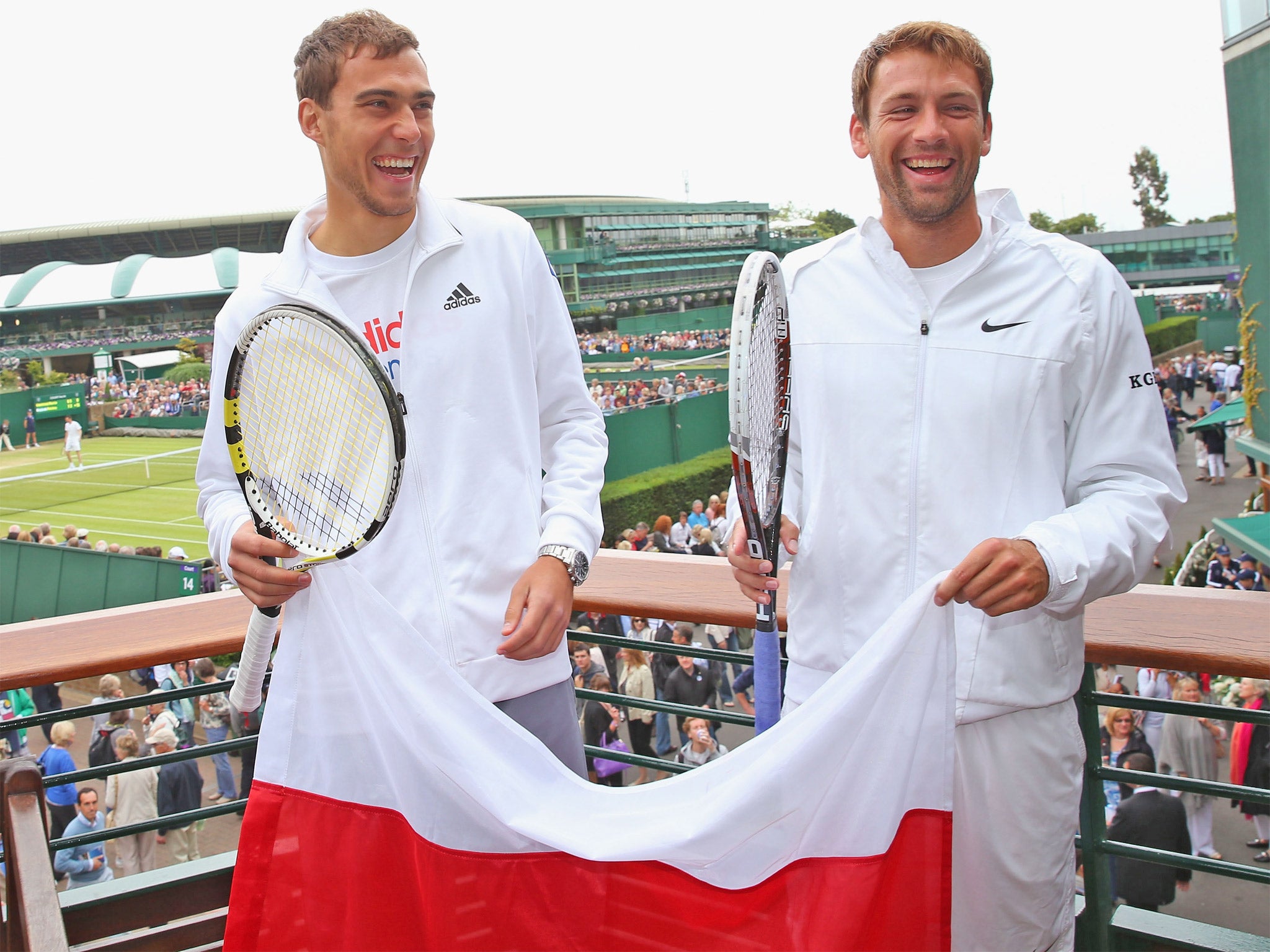Wimbledon 2013: Polish pride at 'white and red Wimbledon'

Your support helps us to tell the story
From reproductive rights to climate change to Big Tech, The Independent is on the ground when the story is developing. Whether it's investigating the financials of Elon Musk's pro-Trump PAC or producing our latest documentary, 'The A Word', which shines a light on the American women fighting for reproductive rights, we know how important it is to parse out the facts from the messaging.
At such a critical moment in US history, we need reporters on the ground. Your donation allows us to keep sending journalists to speak to both sides of the story.
The Independent is trusted by Americans across the entire political spectrum. And unlike many other quality news outlets, we choose not to lock Americans out of our reporting and analysis with paywalls. We believe quality journalism should be available to everyone, paid for by those who can afford it.
Your support makes all the difference.Any more of this and strawberries and cream will pass for a national dish in Poland. Tomorrow it is the turn of the men to duel for the right to join Agnieszka Radwanska in the Wimbledon semi-finals. No Polish male has ever journeyed so far, indeed for more than two decades from 1986, no Pole appeared in the men's singles at all.
The progress of Jerzy Janowicz and Lukasz Kubot is not the result of a systemic assault on the game à la Russia. Tennis in Poland is regarded by most as a bourgeois relic, a game for ancient aristos evoking pre-war days before Soviet conquest. The only grass court in the country was to be found at the British Embassy in Warsaw, and that no longer survives.
Radwanska's advance to the Wimbledon final last year was the first by a Pole at a grand slam since Jadwiga Jedrzejowska contested the 1939 French Open final. Poland awaits its first grand slam winner. Far from being treated as failure, defeat to Serena Williams in the final was seen as a great success and enough to give Radwanska a share of the front page of Poland's national sport daily beneath the country's victorious volleyball team.
Since then she has struggled to repeat that form and until now had not progressed beyond the quarter-final at a grand slam. The unprecedented developments at this year's Wimble-don took Poland's media outlets by surprise. Journalists who had booked to stay for only one week have been forced to extend their stays to feed the growing levels of interest. Images of Radwanska, Janowicz and Kubot featured on the front pages and topped the web traffic ahead of the Tour de France and even more shockingly, football transfer stories.
Photographers were scrambled to organise a pre-quarter-final photo of Janowicz and Kubot holding the Polish flag on the balcony of the players' restaurant.
"A white-and-red Wimbledon," Gazeta Wyborcza, a Polish newspaper, proclaimed, referring to the colours of the Polish flag. The Rzeczpospolita daily ran the headline: "We will have a Polish quarter-final."
The last Polish player to stir anything like this kind of frenzy was Wojtek Fibak, the posh boy from Poznan, who reached the Wimbledon quarter-finals 33 years ago. Fibak is best known today as the owner of the largest private art collection in Poland. While the return of tennis to the Olympic fold has stimulated state involvement in the game, Polish youngsters are woefully undernourished compared to the over-resourced kids swanning around the National Tennis Centre at Roehampton. The Lawn Tennis Association poured more than £30 million into the NTC pot last year yet only two Britons made it into the second week, and neither Andy Murray or Laura Robson graduated via the system.
Perhaps the answer is to relocate to the sunny uplands of Krakow, where Radwanska senior, Peter, managed to coach two daughters to the Wimbledon junior singles title. Urszula has yet to emulate her older sister's progress on the WTA, but at 22, it is not over yet.
Join our commenting forum
Join thought-provoking conversations, follow other Independent readers and see their replies
Comments